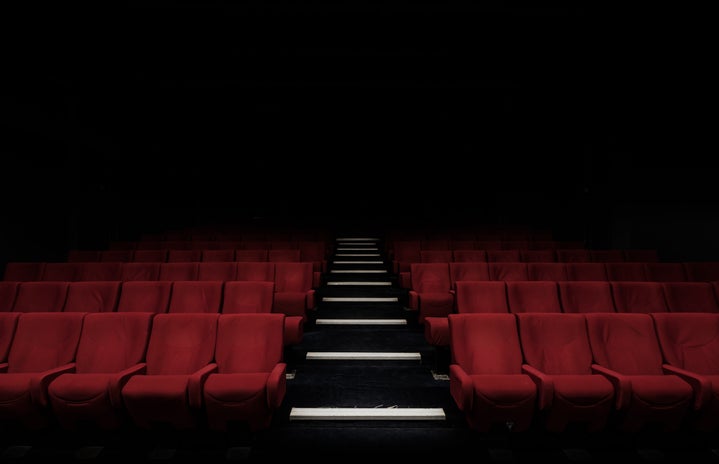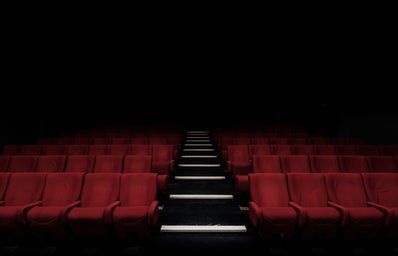2024 has proven itself to be an amazing year for horror movie releases. With unique films in every genre of horror, from the supernatural to the slasher, it appears to be a horror renaissance. With these strong releases, new and diverse voices have begun to appear more frequently behind the camera.
Films like “I Saw the TV Glow,” written and directed by Jane Schoenbrun, who is transfeminine and non-binary, or “Lisa Frankenstein,” written and directed by Diablo Cody and Zelda Williams, are working to diversify the horror genre. With the new perspectives behind the camera, we have begun to see a wide variety of unique horror stories, often pulled from the anxieties and fears created by living in these diverse bodies.
Horror has always pulled on real life political and cultural events in order to create its scares. While fear of the societal outsider may manifest as a masked killer, the underlying anxiety is the same. Horror monsters symbolize something real. What better way to scare audiences than to use the horrors of the everyday world?
A good horror film draws on political and societal “pressure points” to pull in audiences. For example, American fears in the ’50s of communism and “The Space Race” became sci-fi horror, like “Invasion of the Body Snatchers.” Disagreement with the Vietnam War in the ’70s became grimy, realistic exploitation films like Wes Craven’s “The Hills Have Eyes.” While some may argue movies are for entertainment value only, it’s impossible to ignore the larger context.
Horror in today’s landscape certainly has a lot to pull from, which is probably why 2024’s releases have been so strong. Horror thrives in times of chaos. This year especially, has seen an excellent run of female-led horror. While women have been the protagonists of horror for years, they didn’t often get the opportunity to direct or write the projects. Thankfully in recent years, women have reclaimed a position in their own stories. Who else would be able to accurately portray the everyday anxieties of women but a woman?
Certainly a standout of this year’s releases, “The Substance,” written and directed by Coralie Fargeat, tells the story of Elisabeth Sparkle, a former actress and workout show host who uses a mystery drug, “the substance,” in order to create a younger version of herself. With a culture that praises Ozempic transformations without regard to side effects and children becoming addicted to anti-aging skincare before they reach their teens, the premise doesn’t sound too far off.
Society’s obsession with youth and beauty has taken over, and our own health has fallen victim. One of the movie’s most effective scenes doesn’t show any horror elements at all. It focuses on Elisabeth in the mirror, who stares at herself while getting ready to go out, changing her makeup and covering her body until her body dysmorphia is so strong she decides not to leave at all. This is a scene that too many women will recognize. The movie is an incredible commentary on the extreme lengths we are expected to go as a result of the fear of aging, told through a tale of disturbing body horror. Fargeat expertly uses the horror elements as symbols of very real fears.
Another standout of the year, “The First Omen,” directed and co-written by Arkasha Stevenson, features a female lead in Rome who is preparing to give a life of service to the church, until she begins to uncover a dark conspiracy. The themes of the movie cover forced birth and the loss of bodily autonomy, releasing only two years after the overturning of Roe v. Wade.
“Immaculate,” also released this year, and although not directed by women, Sydney Sweeney played an active part as producer to get it made. This film incites fear through the loss of control over one’s body. It’s clear these movies draw on the refusal of reproductive healthcare for people across America. The movie puts the audience in the shoes of a woman who loses control of her own body while those around her continue to make decisions for her, leaving her in extreme danger. The parallels to vulnerable women across America having to undergo the same treatment is haunting. The movie is nauseating and upsetting, but so is the real-world political context the film draws on.
The female perspective in horror is incredibly important. Horror is the perfect outlet for women to illustrate their own fears and anxieties. A horror film is an equal opportunity scare. Letting larger audiences know what navigating the world as a woman feels like, through the main character.
Diverse perspectives behind the camera are vital for audiences to experience a life different than their own. With horror especially, it is incredibly powerful to understand what the all-consuming anxieties or fear of going through the world feels like for those who normally would never understand. Everyone is put in the victim’s shoes. It is clear through this year’s releases, that women must be given more opportunities behind the camera to properly tell their own stories. I’m so excited to see what horrors the women of this genre will bring on next!


